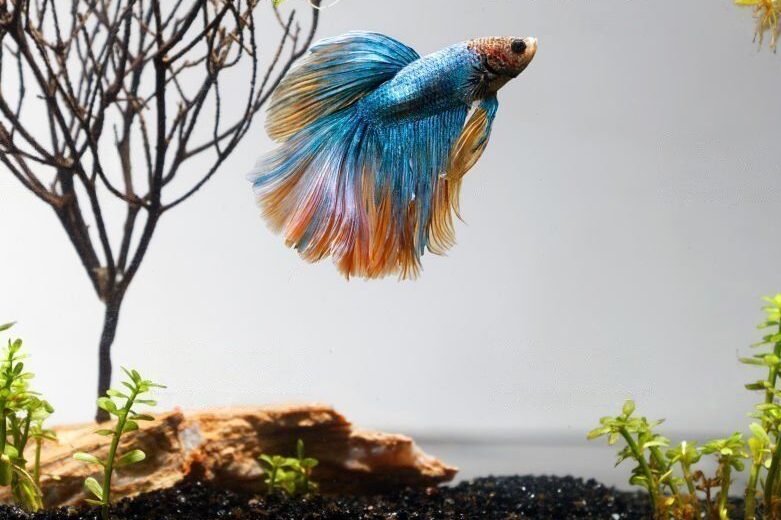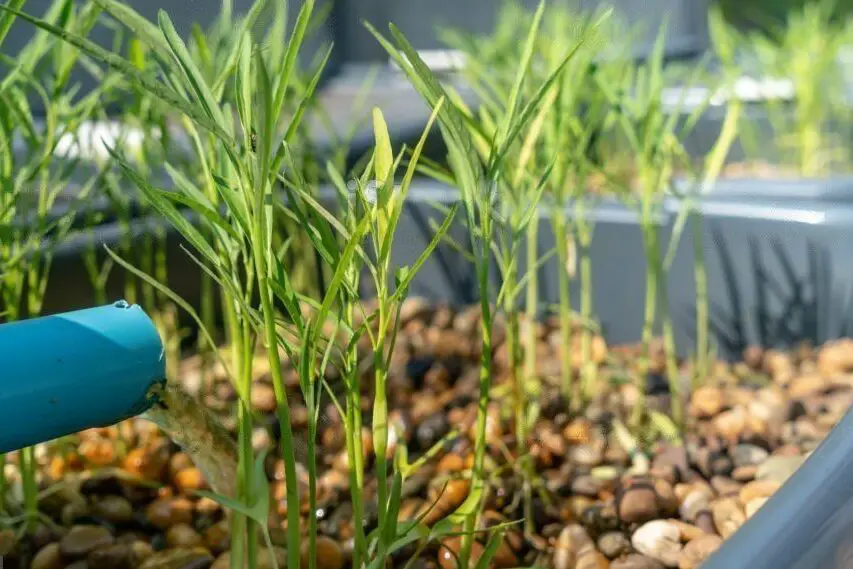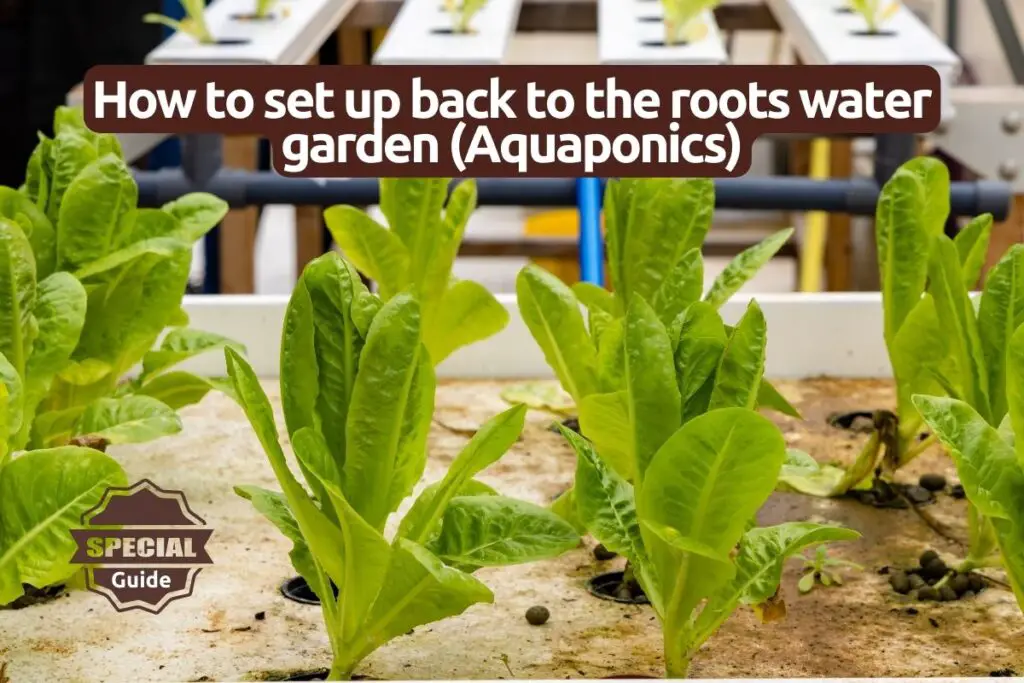A water garden is a great way to add beauty and give a new look to your home, as back to the roots water gardens are some of the most unique and interesting things you can find nowadays.
These gardens which are also called aquafarms sometimes, usually use an aquaponics system that combines fish farming with hydroponics to produce incredibly healthy and bountiful plants.
As you have already understood, in this blog post, we’ll explain what a back-to-roots water garden is, its pros and cons, which plants to choose and how to set one up yourself.
So, how do you set up back to the roots water garden or aquaponics?
Stay tuned until the end of this article, and you’ll find all the answers you need to start your own back to the roots water garden!
What is a back to the roots water garden (aquaponics)?
A back to the roots water garden or aquaponics is a combination of mixing plants and fish in the same environment in order to grow plants with the help of the fish at a low cost and maintenance.
These water gardens can be used both as an outdoor decoration of your backyard or as a clever way to grow some plants and own a fish in an overall self-sustainable method. You don’t need to add compost soil processed from the kitchen waste since plants and fish has a way to benefit with each other through aquaponics.
You can choose a variety of different plants and fish that can be used in a water garden to start your own homemade aquaponics.
How to set up a back to the roots water garden (Step by Step)
Setting up a back-to-roots water garden can be a fun and rewarding experience if you plan it out properly. It is important to do all the appropriate steps in order to have great results.
So, below there are a few useful tips that will help you set up your own back to the roots water garden:
Choose the right place
Before you even think about starting a water garden, you need to figure out where it will be located, the place should be not too hot and neither too cold.
Make sure the area is well-drained and get enough at least six hours of sunlight every day because don’t forget that sunlight is the most important and the only energy that plants need to grow.
Also, ventilation is important as well because you need to treat these plants almost like they are plants we usually grow in our yard.
Choose the right plants
Once you’ve determined the spot, you need to choose the right plants for your back-to-roots water garden, which is probably the most important part of the process to see good results.
Try to pick plants that are drought-tolerant and have shallow roots that will benefit from being in a water garden environment. By doing this, it will also benefit your fish in many ways that we will mention later in this blog post.
Add water
After you’ve decided what plants, you need to add, it’s time to add some rainwater or potable pH-neutral water to the garden which are the most popular options for this kind of aquarium.
Make sure to add enough so that the plants are not standing in water because this will help them retain moisture soon and avoid the fish from completely eating the roots. However, there are some kinds of fish that don’t eat plant roots, so you don’t need to worry at all.
Add a fish

This is not an essential part of the process but for many people it is, and we recommend it as well because it has more benefits to offer you than drawbacks.
Some people may say that a fish will need extra care and costs for food, but this is not a serious reason to consider.
On the other hand, a fish will be very useful for the growth and the health of your plants. Adding a fish like a Betta fish or a goldfish will fertilize your plants with its waste materials.
Also, these fish don’t need big maintenance because these fish sometimes can be fed by just eating the roots of your plants, so you can save some money if you don’t want to buy fish food regularly.
However, if you decide not to include a fish, then you need to add ammonia to cycle your aquaponic tank in order to replace the fish which produces it naturally and helps the plants grow.
Keep an eye on it
If all goes well, your back-to-roots water garden should start growing and thriving in no time!
Also, make sure to check on it regularly and adjust the watering schedule as needed not only for the plants but for the fish as well.
You’ll need to add water every time the water level gets lower or every time you see that the water is dirty, so it needs to be replaced with new fresh water for your fish and plants.
Pros and cons of back to the roots water garden
At this part of the blog post, we will review the back to the roots water garden in order to bring you our honest opinion about it and let you know what to expect from this product.
Below there is a table in which you can see the advantages, the drawbacks, and some improvements you can add by yourself in order to get the best possible results from your water garden.
| Pros | Cons | Improvements and Suggestions |
|---|---|---|
| Easy Installation | No heater for your fish | Add heater and heater slots |
| Low maintenance | There are no lights included (if you want to install) | Add lights (some prefer LED) |
| Great and simple design | Filter is considered loud | Tube should be detachable |
| Includes all the essentials |
These were just some of the major things we detected about this product.
What are some of the best tips for watering and caring for a back-to-the-roots water garden?
Caring for and maintaining your water garden is essential when it comes to a healthy environment for your plants and fish.
Below you can find some tips for watering and caring for a back-to-roots water garden:
1. Fertilize your back-to-roots garden with organic compost tea once every two weeks in Spring and Fall.
2. Take care of pests by using natural pesticides like neem oil or garlic powder when needed.
3. When watering your back to the roots water garden, make sure always to use distilled or filtered water as this is best for plants and fish.
4. To avoid overflooding your garden, it’s important to calibrate your gauge regularly.
How do I choose the right plants for my back to the roots water garden?
When choosing the best herbs for aquaponics, it is important to think about the look you want to give to your backyard.
Do you want succulents, ferns, or cacti? You can start by looking at the climate where you live and what type of plant will thrive in that environment.
You can also consider which plants need less maintenance or sun and which should be planted near each other. When it comes to choosing plants for your back to the roots water garden, you have a lot of options that we will analyze below.
Also, apart from your country’s climate, you need to think about which plant is suitable and whether it is feasible to grow in an aquaponics system.
Below you can find some of the plants that are suitable and are able to grow easily in an aquaponics system:

Some of the most popular and common plants for aquaponics:
- Leafy lettuce
- Basil
- Watercress
Alternative and less common plants for aquaponics:
- Mini tomatoes
- Peppers
- Cucumbers
Plants to avoid for aquaponics:
These plants below are some of the ones you’ll definitely want to avoid because are hard to grow in small places like a water garden, as they require more depth soil for their roots.
- Turnips
- Carrots
- Rutabaga
- Onions
- Garlic
Which is the best temperature for aquaponics?
Keeping a good temperature between the numbers mentioned above is one of the most important components of the quality of your plants and the life expectancy of your fish.
The best temperature for your aquaponics is to ensure that your water temperature is between 20-30° Celsius or 68 to 86°F because it helps keep the fish and the foot roots healthy all over the year.
Also, who thinks that a good temperature isn’t important for the good of aquaponics?
You can simply achieve this by installing a heater if you think that the climate of your country is too cold or if you live in a warm country, you can install a cooler to balance the temperature of the water. Lights are also important in some cases where there is no sunlight during the day.
Conclusion
Summing up, a back to the roots water garden is a beautiful and beneficial garden that uses rainwater as its main source of water. By incorporating plants that require moist soil, this garden creates a hydroponic system that is self-sustaining. This system is perfect for climates that experience dry spells, as it helps to conserve water and maintain plant health. We hope that you found our blog post useful and the question about “how do you set up back to the roots water garden” is now solved. You can buy back to the roots water garden here.

As a dedicated mother and passionate software developer, she weaves her diverse experiences into captivating stories that inspire and engage readers. Emma's love for sustainable living and environmental consciousness permeates both her personal and professional life. When she's not immersed in the world of coding and software development, Emma can be found nurturing her family and tending to her thriving organic garden. Her commitment to sustainable practices extends to every aspect of her life, from repurposing household items to embracing eco-friendly technologies.











